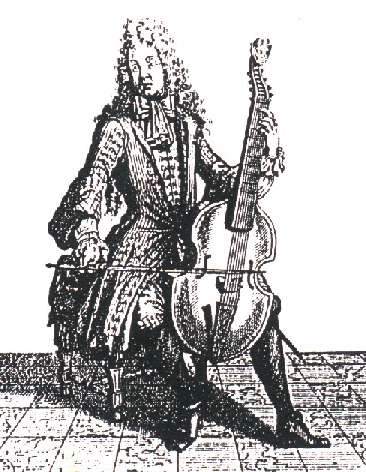Slowik and Ogg at the Museum of American History
By Stephen Brookes. • The Washington Post • September 28, 2010
One measure of a society's level of advancement, you might reasonably argue, is how much of the music of Johann Sebastian Bach it keeps within earshot. The Smithsonian Chamber Music Society, under the direction of the scholarly multi-instrumentalist Kenneth Slowik, is doing more than its share for civilization this season with a five-concert series exploring a range of Bach's sonatas, and the opening program on Sunday night showed just how many neglected wonders exist in this extraordinary legacy. The concert (in the Hall of Musical Instruments at the National Museum of American History) opened with Slowik joining with the eminent Dutch harpsichordist Jacques Ogg for Bach's Concerto in C for two harpsichords, BWV 1061. Some find the harpsichord a jangling, clattery menace to the ears -- and two of them a threat to sanity itself -- but this was a powerful, carefully detailed and deeply engaging performance. The instruments may share some of the credit: Ogg played a remarkably refined-sounding 1745 instrument made by Joannes Daniel Dulcken, while Slowik manned an exact copy crafted by Gaithersburg harpsichord-builder Mark Adler. The matching sonorities underpinned the fine and often dramatic interplay between the players.
The concert (in the Hall of Musical Instruments at the National Museum of American History) opened with Slowik joining with the eminent Dutch harpsichordist Jacques Ogg for Bach's Concerto in C for two harpsichords, BWV 1061. Some find the harpsichord a jangling, clattery menace to the ears -- and two of them a threat to sanity itself -- but this was a powerful, carefully detailed and deeply engaging performance. The instruments may share some of the credit: Ogg played a remarkably refined-sounding 1745 instrument made by Joannes Daniel Dulcken, while Slowik manned an exact copy crafted by Gaithersburg harpsichord-builder Mark Adler. The matching sonorities underpinned the fine and often dramatic interplay between the players.
The real focus of the evening, though, was Bach's three sonatas for the cello-like viola da gamba, BMW 1027, 1028 and 1029. These pieces have long lived in the shadow of the more celebrated suites for solo cello and aren't heard often, but they're real treasures that draw on an eclectic range of baroque styles, forms and gestures. Slowik turned in intense and absorbing performances in the best "historically informed" tradition, drawing a robust, somewhat astringent tone from a Matthias Hummel instrument from 1708 and a sweeter, lighter sound from an intricately inlaid instrument made by Joachim Tielke in 1691 -- a thing of such beauty that it received its own round of applause when Slowik unveiled it onstage.


Reader Comments